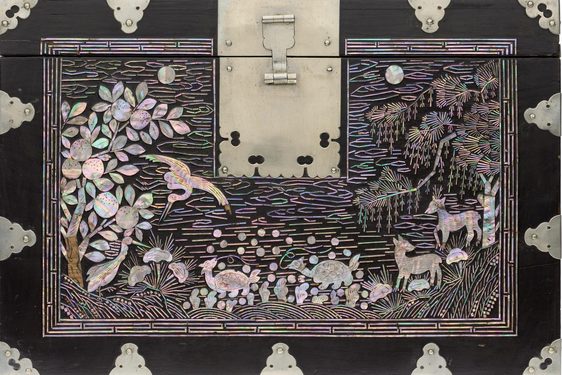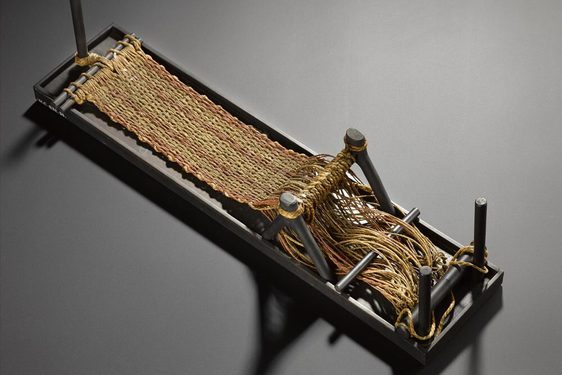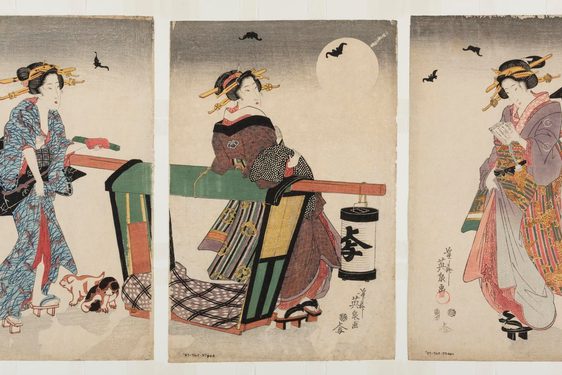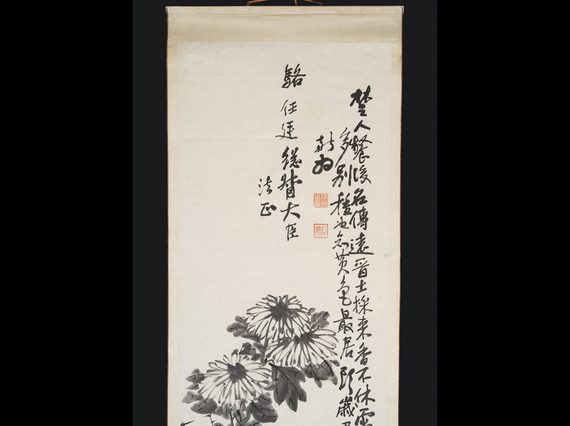
Exploring painting styles of Korean hanging scrolls
News Story
In our collection we have six Korean hanging scrolls that all date from the beginning of the 20th century. This was a time of great change that marked the end of the long-running Joseon Dynasty (1392 – 1910) and the beginning of the Japanese Colonial Period in the country (1910 – 1945).
The painters whose work is represented in this collection are Jo Seokjin (artist name Sorim) (1853 – 1920), Jeong Hak-kyo (artist name Mongin) (1832 – 1914), Seo Byeong-o (artist name Seokjae) (1862 – 1935), and Kim Gyu-jin (artist name Haegang) (1868 – 1933).
The Stewart Lockhart collection
The Korean hanging scrolls are part of the collection assembled by Sir James Haldane Stewart Lockhart (1858 - 1937). Lockhart was a British colonial official in Hong Kong between 1882 to 1902. He was later appointed Commissioner of Weihaiwei (now Weihai) in north-east China from 1902 to 1927.
During his tenure in Hong Kong, he founded the Hong Kong Football Club and passionately advocated for the involvement of local people in government. This led to the recognition of local organisations including the Society for the Protection of Women and Children – the Po Leung Kuk – and the Tung Wah Hospital.
Stewart Lockhart began collecting during his time in Hong Kong. Although he initially focused on coin collecting, he soon moved onto developing a large collection of Chinese paintings, calligraphy, and ink rubbings. His painting collection was developed through a combination of purchases and gifts.
Image gallery
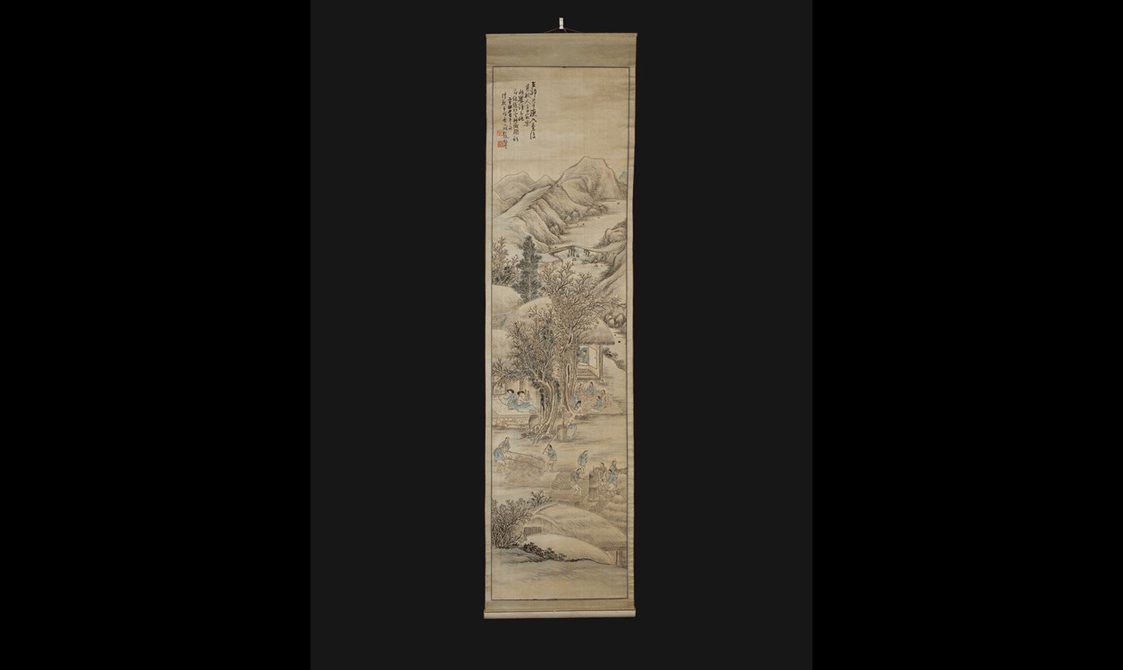
Hanging scroll painting, depicting landscape with figures engaged in agricultural and popular activities (pungsokdo) including harvesting corn, making rice flour and drinking, seals and signature, ink and colour on silk, part of a collection of Chinese material collected by Sir James Stewart Lockhart: Korea, by Jo Seokjin, 1910. Museum reference IL.2003.61.301.
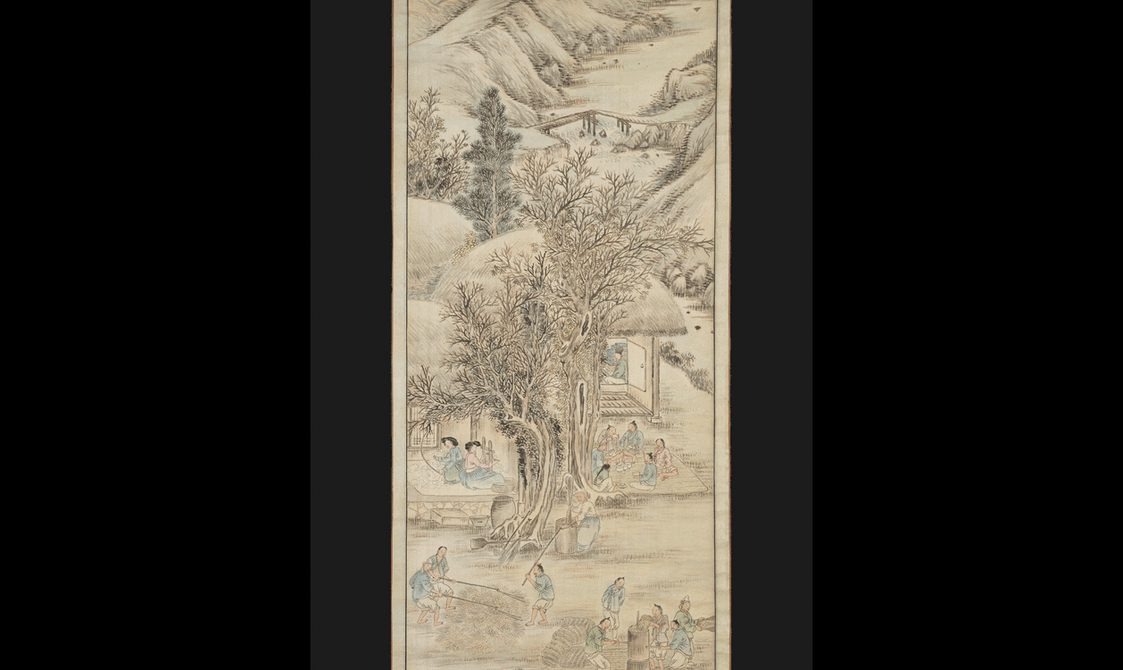
Detail of Korean scroll. Museum reference IL.2003.61.301.
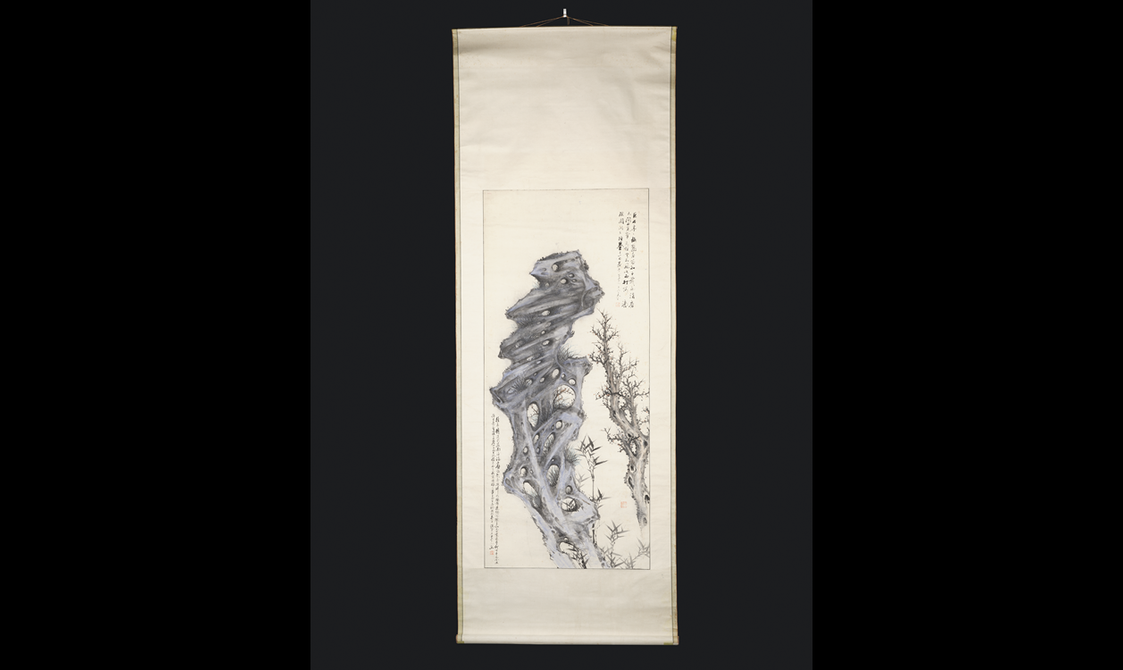
Hanging scroll painting, depicting a stylised rock with grass or orchids, plum blossom and bamboo, seals and signature, ink and colour on paper, part of a collection of Chinese material collected by Sir James Stewart Lockhart: Korea, by Jeong Hak-gyo, 1909. Museum reference IL.2003.61.302.
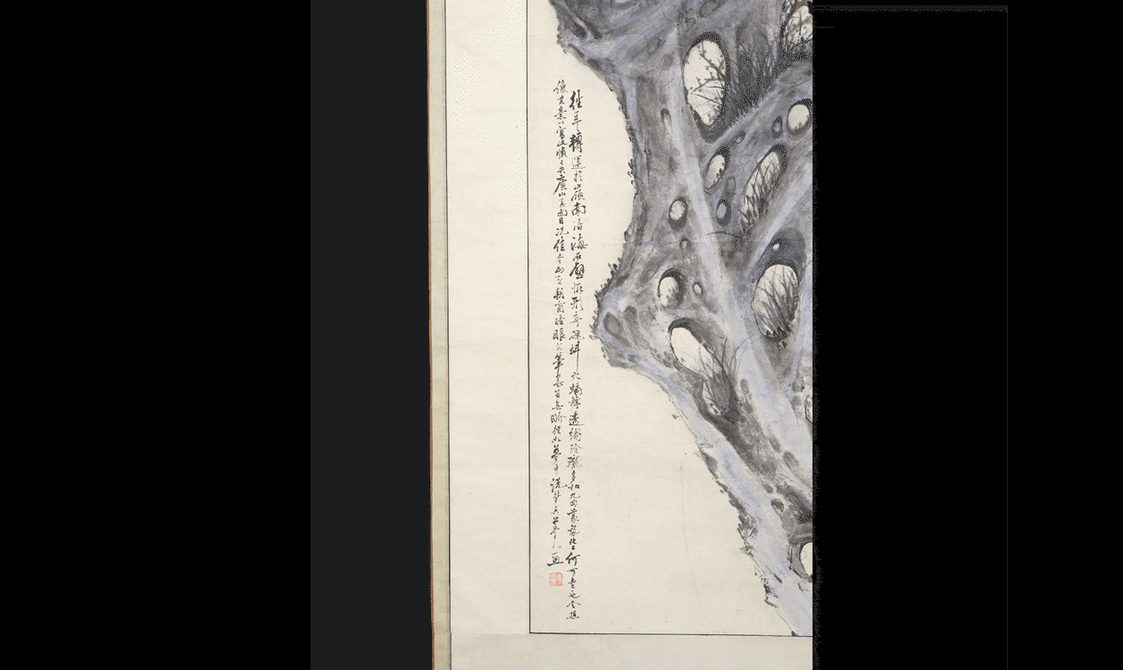
Detail of Korean scroll. Museum reference IL.2003.61.302.
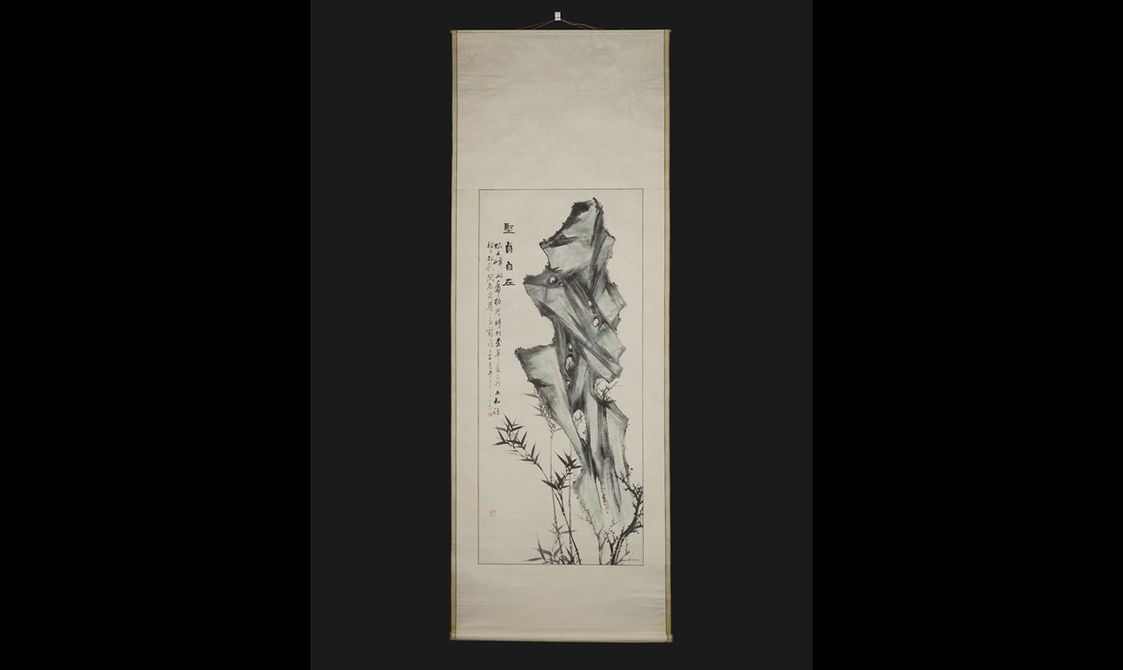
Hanging scroll painting, depicting a rock, bamboo and plum blossom, seals and signature, ink and colour on paper, part of a collection of Chinese material collected by Sir James Stewart Lockhart: Korea, by Jeong Hak-gyo, 1909. Museum reference IL.2003.61.303.
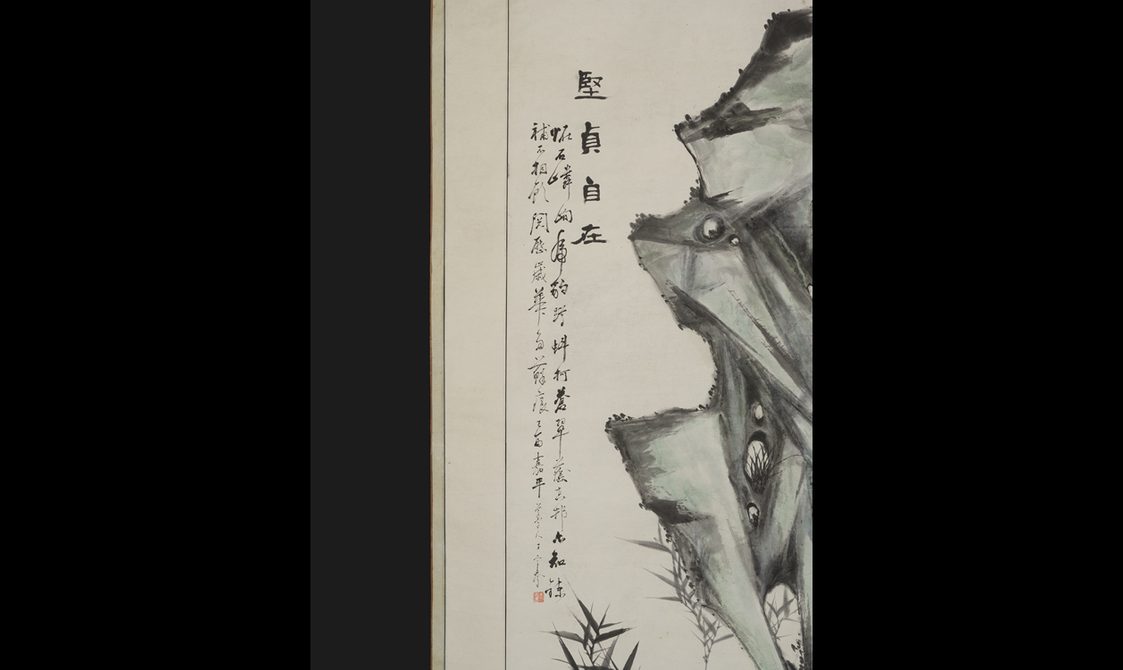
Detail of Korean scroll. Museum reference IL.2003.61.303.
Journey to National Museums Scotland
While Secretary General, Stewart Lockhart bought some of the Korean paintings through an employee of the British Government in Hong Kong, Mr Mok Man Cheung. Mr Cheung was one of the many people that Lockhart knew who would find East Asian paintings for him to buy. These Korean paintings were bought via Mr Cheung from Mr Mu Kim, a director of a railway company.
Lockhart returned to the UK when he retired, and his collection passed to his daughter, the furniture designer Betty Joel.
The six paintings and much of Lockhart’s calligraphy, painting, and numismatics collection were then gifted to George Watson’s College, his former school in Edinburgh. The Lockhart collection has been on loan to National Museums Scotland since 2003. The archival collection is available to view at National Libraries Scotland, and the photographic records are on loan to National Galleries Scotland.
In the summer of 2022, the National Museum of Korea generously funded the conservation of the six Korean hanging scrolls. The conserved paintings will be displayed one at a time in the Exploring East Asia gallery at the National Museum of Scotland. This marks the first time the museum has shown Korean painting in our permanent gallery.
Image gallery
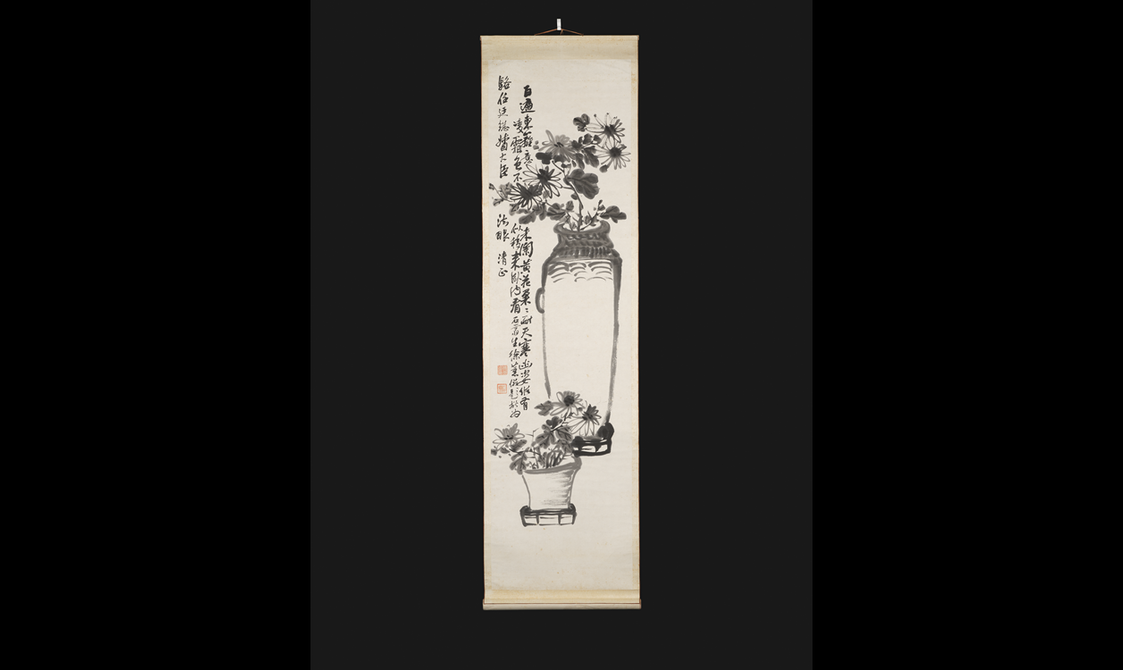
Hanging scroll painting, depicting two vases with chrysanthemums, seals and signature, ink on paper, part of a collection of Chinese material collected by Sir James Stewart Lockhart: Korea, by Seo Byeong-o, c. 1910. Museum reference IL.2003.61.304.
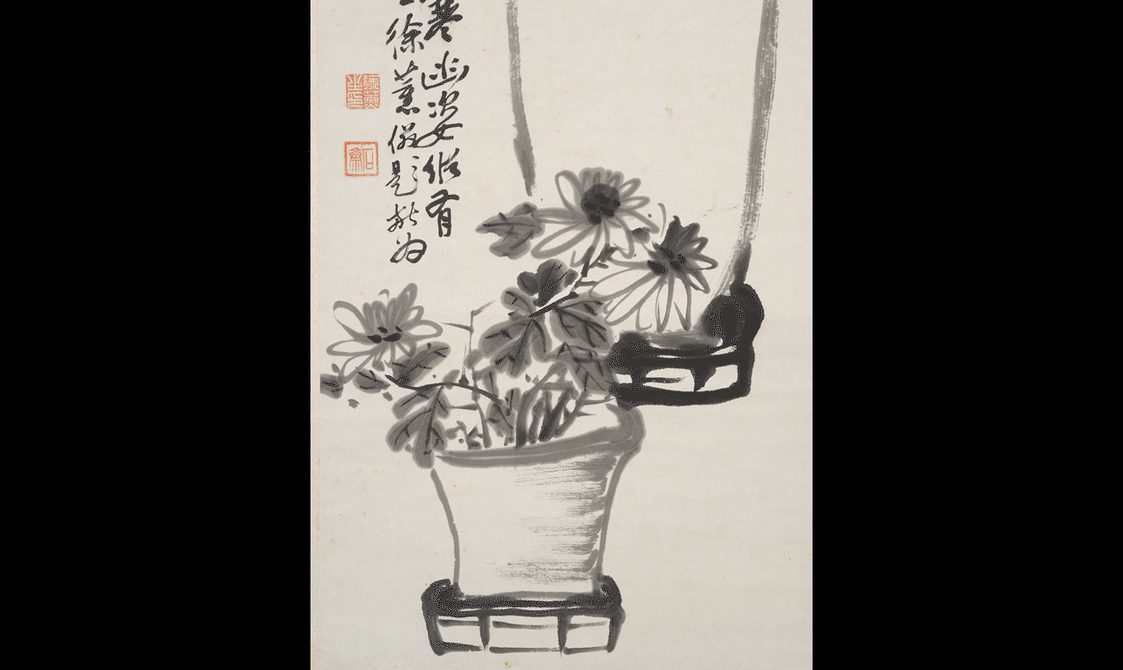
Detail of hanging Korean scroll. Museum reference IL.2003.61.304.
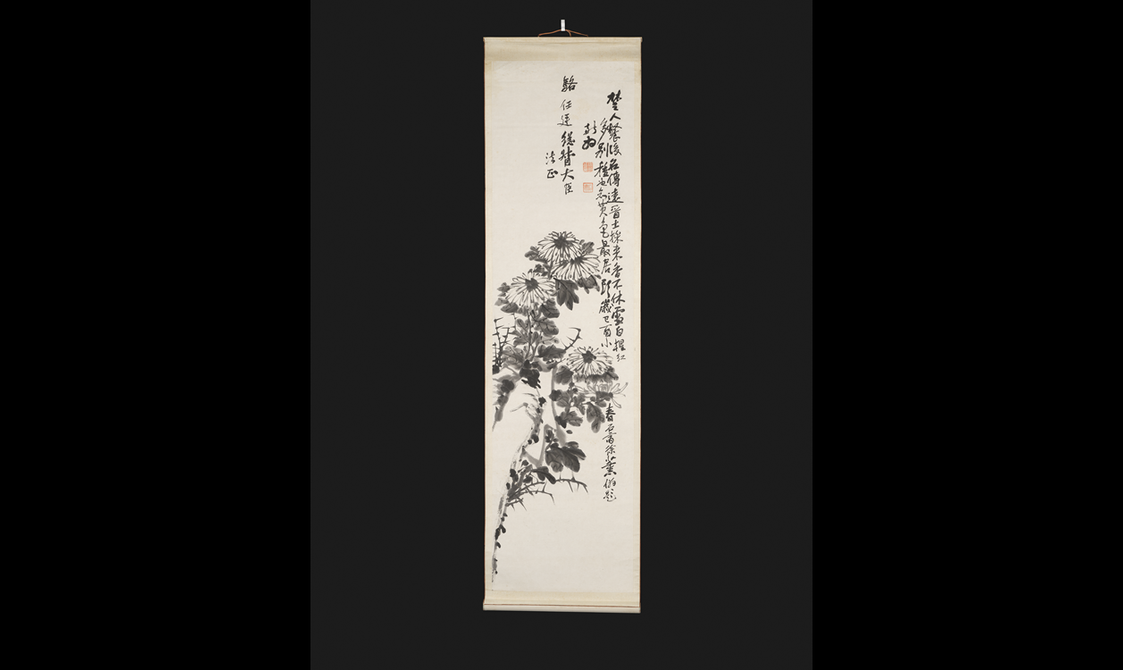
Hanging scroll painting, depicting a rock and chrysanthemums, seals and signature, ink on paper, part of a collection of Chinese material collected by Sir James Stewart Lockhart: Korea, by Seo Byeong-o, 1909. Museum reference IL.2003.61.305.
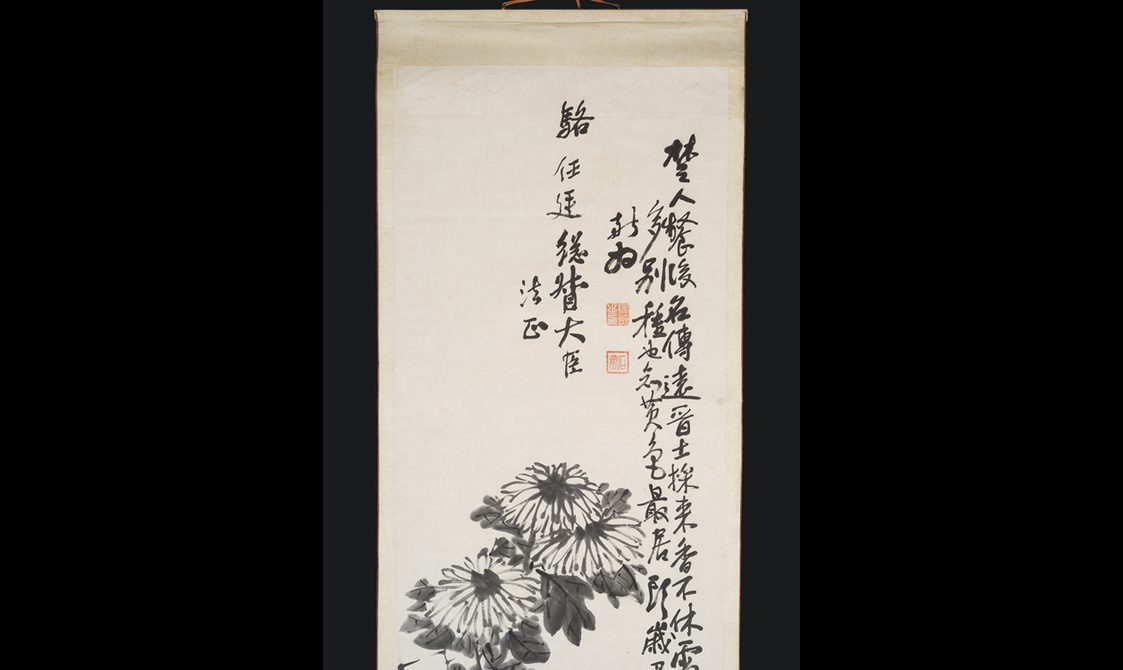
Detail of hanging Korean scroll. Museum reference IL.2003.61.305.
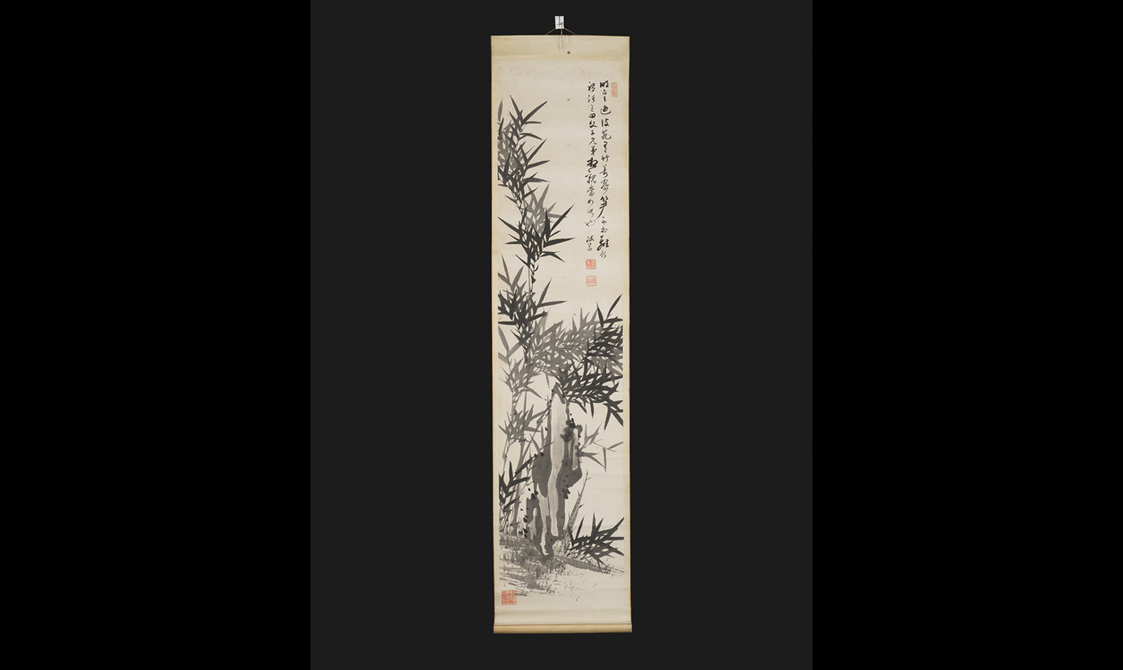
Hanging scroll painting, depicting bamboo, seals and signature, ink on paper, part of a collection of Chinese material collected by Sir James Stewart Lockhart: Korea, by Kim Haegang, c 1910. Museum reference IL.2003.61.306.
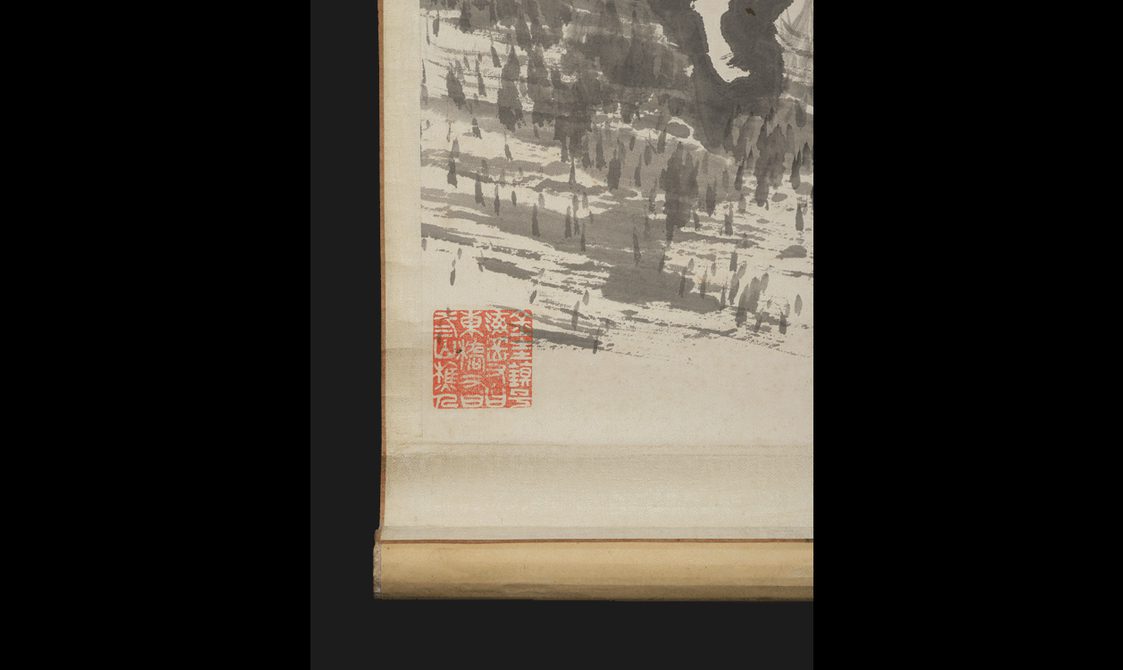
Detail of hanging scroll. Museum reference IL.2003.61.306.
Painting Styles in Joseon Dynasty Korea
Korean painted art of the Joseon Dynasty (1392 – 1910) can be broadly divided into three, often overlapping groups: Literati Painting, Court Painting, and Folk Painting.
Court painting
One of the court paintings conserved as part of this project was made by Jo Seokjin. Jo Seokjin was one of the last court painters of the Joseon Dynasty.
A court painter was a professional position held by talented artists trained in traditional techniques and styles such as landscape painting, bamboo painting, flower painting, and portraiture. The work of the court painter could be quite varied. It mainly consisted of painting commission pieces for the court such as records of processions, portraits of officials, and hanging scrolls to decorate the royal palaces.
Of all the activities of court painters, painting a King’s portrait was considered the most important. A team of specially selected and highly skilled painters would often work together for such a prestigious commission. Jo Seokjin was one of the few artists commissioned to paint the royal portrait.
Jo Seokjin established an Academy of Painting and Calligraphy in Korea to pass on his painting techniques and knowledge to the next generation of Korean painters in the early 20th century.
The Jo Seokjin painted scroll in this project shows a rural village at harvest time, and therefore could be described as a type of court painting called gyeongjikdo. Gyeongjikdo showed scenes of farming life, and were painted to help the King and aristocracy appreciate the hard work that agricultural labourers had to endure to support the country.
Curator Lauren Barnes describes the scenes and details of one of Jo Seokjin's painted scrolls in this film.
Folk painting
Folk painting, known as minhwa, were made by both court painters and anonymous artists alike for occasions such as weddings, birthdays, and Lunar New Year.
Folk paintings usually included animals, especially tigers and birds, and flowers. They are known for their free-spirited and brightly coloured pieces.
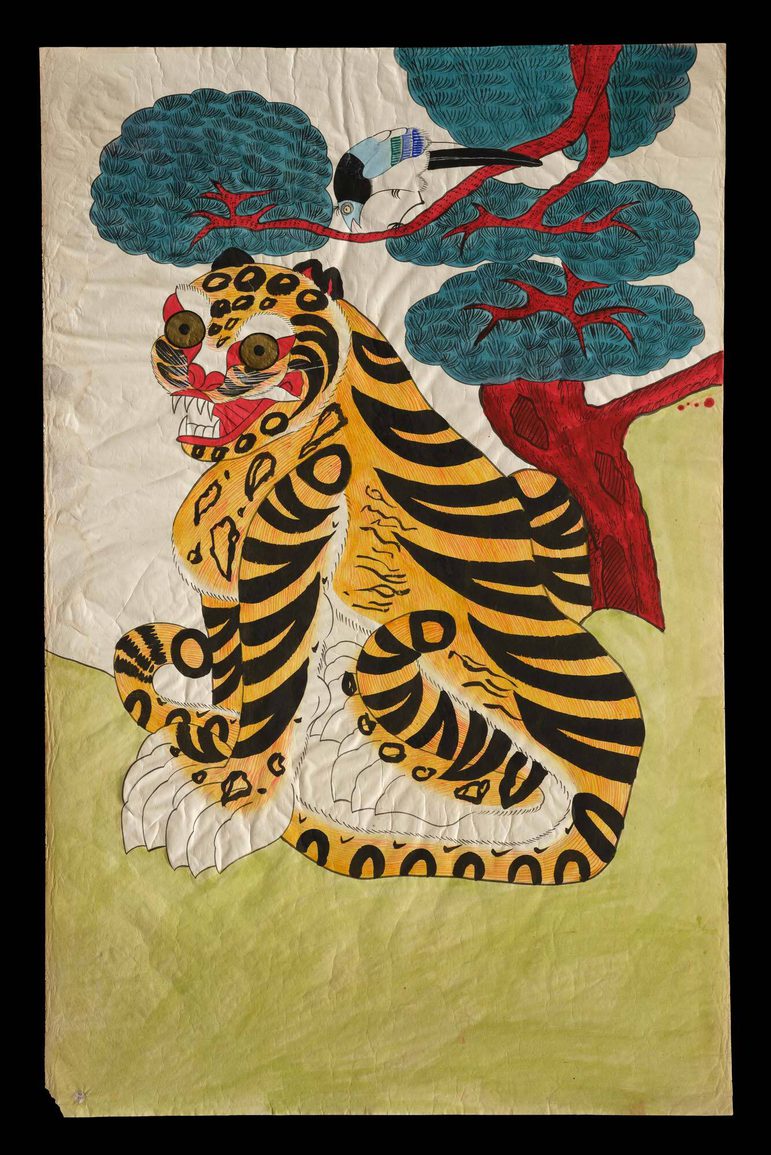
Painting of a tiger with a magpie resting on a branch of a pine tree, coloured ink on paper, Korea, Joseon Dynasty, c. 1840. Museum reference A.1905.37.1.
At National Museums Scotland, we have folk paintings in the collection that were brought back from Korea in the early 1900s. The collection includes this large tiger painting that would have been hung at the door of someone’s house or business at the beginning of the Lunar New Year to guard against bad luck.
Literati painting
Literati painting, known as muninhwa, was considered by many to be the pinnacle of painted art. These were made by painters from the higher classes of society who favoured the Chinese styles of painting such as landscape and plant paintings.
Literati paintings included poetic inscriptions, signatures, and a painted image that together conveyed a story or a moment in time. Literati painting was broadly restricted to subjects of classical Chinese paintings, but unlike paintings for court, the artist was free to develop their own individual style.
In the paintings conserved in this project, five of them, painted by three different artists, are literati pieces. Each of these is distinct, and this shows how painters were able to express their own preferences and develop their own style.
Jeong Hak-kyo focuses on paintings of rocks, Seo Byeong-o painted bold images of flowers in vases, and Kim Gyu-jin became known for his paintings of bamboo.
Connections between painting styles
There was much overlap between folk painters, literati painters and court painters. Kim Gyu-jin, although a literati painter, was a favourite at court and taught King Gojong’s son calligraphy and painting. He was also commissioned by King Sunjong to paint a mural of Geumgangsan (the Diamond Mountain) in Korea.
It was also common for court painters to take on additional painting commissions. Many court painters became known as accomplished literati-style painters.
Court painting also inspired folk painting. Painted screens of chrysanthemum flowers were used as a backdrop to royal events and weddings across the country.
Court and folk paintings are often not signed, so it is sometimes hard to tell apart which pieces have been made for the court and which had been made for homes.
Scroll (museum reference IL.2003.61.302) is on display in the Exploring East Asia gallery at the National Museum of Scotland.
The conservation of the Korean Scrolls has been generously funded by the National Museum of Korea.
